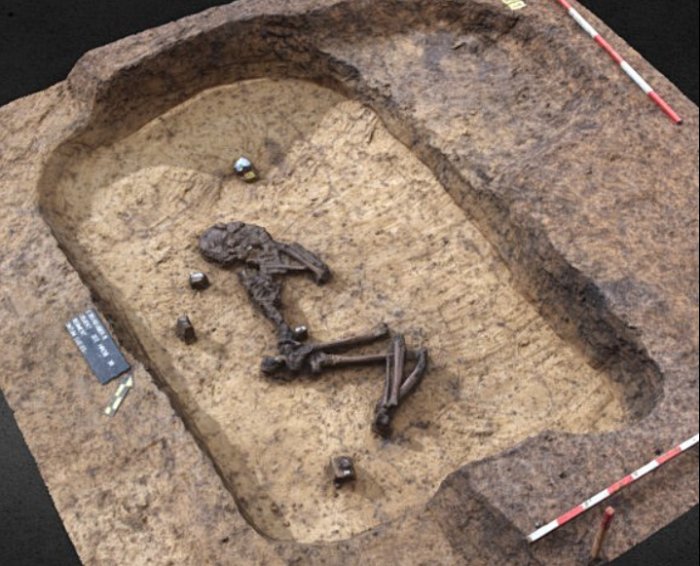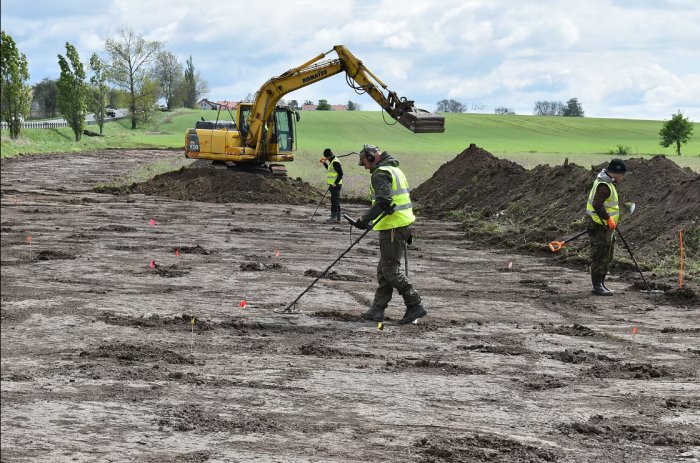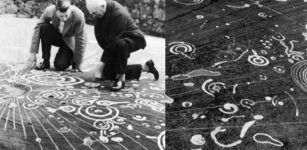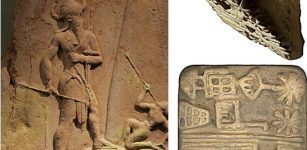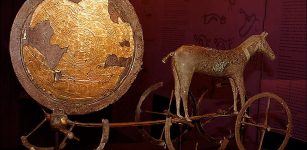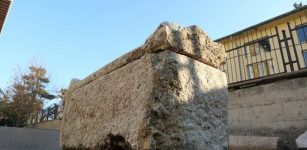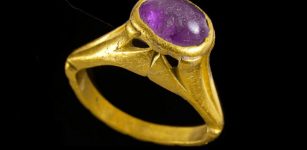Longest European Burial Mound Pre-Dating The Egyptian Pyramids Discovered In Czechia
Jan Bartek – MessageToEagle.com – Recent archaeological excavations in the Czech Republic have unearthed one of Europe’s oldest monumental burial monuments. This significant discovery was made during a routine survey of the area designated for the future D35 highway, specifically in the section connecting Sadová and Plotišti nad Labem, where the D35 will intersect with the D11 highway.
Credit: University of Hradec Králové (FF UHK)
The findings reveal that this burial mound predates the construction of the Egyptian pyramids, making it a remarkably ancient structure. Moreover, it has been confirmed as the longest European mound discovered. This discovery provides valuable insights into prehistoric European burial practices and architectural capabilities, contributing to our understanding of early European civilizations.
According to archaeologist Petr Krištuf from the Faculty of Arts of the University of Hradec Králové (FF UHK), the burial mound is undoubtedly a thousand years older than the Egyptian pyramids. This is also the first discovery of a mound of this type in Eastern Bohemia.
3D model of a grave in a long mound discovered by archaeologists along the route of the future D35 highway between Sadová and the highway intersection at Plotiště nad Labem on the outskirts of Hradec Králové. Credit: University of Hradec Králové (FF UHK)
The recently discovered mound in the Czech Republic is of significant archaeological importance due to its exceptional size. At 145 meters in length, it surpasses all previously known mounds of its type in both the Czech Republic and Europe. Typically, mounds of this era range from a few tens of meters to around 145 meters, with the length often correlating to the social status of the deceased.
The excavation has revealed only the perimeter gutter of the mound, which measures 15.1 meters at its widest point. The structure is oriented along a northeast-southwest axis. Notably, the mound’s mantle has not been preserved, a common occurrence in archaeological sites of this nature.
Sylva Tichá Bambasová, the lead field researcher, explains that most mounds from this period are found in areas with a long history of agriculture. As a result, their embankments have often been eroded by centuries of plowing. While archaeologists typically expect to find evidence of palisades and stake pits in the perimeter trough of such mounds, this particular site has not yet yielded such findings.
The archaeological findings at this mound site present several intriguing aspects. Notably, four burials have been confirmed within the mound area, which is unusual compared to similar Central European mounds that typically contain only one or two burials. This discovery raises questions about the relationships between the interred individuals.
A storage pit with findings found on the route of the future D35 near Sadová. Credit: University of Hradec Králové (FF UHK)
Dr. Petr Krištuf, one of the researchers, emphasizes the importance of understanding the connections between these graves. The team will analyze the grave goods, including ceramic vessels and stone objects, to gain insights into these relationships.
To further their investigation, scientists have collected numerous samples from the graves. These samples will study the buried individuals’ kinship, origins, and dietary habits, providing valuable information about the ancient population.
Archaeologists have uncovered approximately three dozen other prehistoric graves in the surrounding area in addition to the mound burials. This suggests that the mound may have served as the initial site for a larger burial ground that expanded over time. It’s possible that burials continued at this location for several centuries, although the exact timeframe has not yet been determined.
“Finds from graves near the mound are currently being processed in the Center for Field Archeology laboratories at the University of Hradec Králové. We mainly focus on determining the age of individual burials. DNA analyses will follow, hopefully providing insights into the buried population,” adds Sylva Tichá Bambasová.
Credit: University of Hradec Králové (FF UHK)
Recent archaeological excavations along the highway route have yielded significant findings. A settlement contemporaneous with the mound has been unearthed, where researchers are currently analyzing house floor plans and examining storage pits containing prehistoric vessels. Nearby, archaeologists have also discovered a substantial commercial estate comprising approximately four thousand structures.
The site primarily dates back to the La Tène period, which is associated with Celtic culture. According to Rytír, an expert in the field, the site’s exceptional nature lies in the diverse array of production-related artifacts, their quantity, and structural characteristics. These factors suggest that the location likely served as a central hub along a major long-distance trade route.
See also: More Archaeology News
This discovery provides valuable insights into Celtic civilization, offering a glimpse into their economic activities, architectural practices, and trade networks. The ongoing excavations are expected to further enhance our understanding of this important historical period.
Written by Jan Bartek – MessageToEagle.com – AncientPages.com Staff Writer


